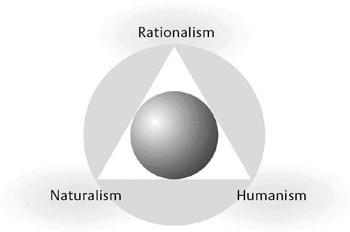Between Two Stories
The first reality confronting businesses that are serious about sustainability is ambiguity, starting with the question: What do we mean by sustainability? The ambiguity inherent in sustainability has deep cultural roots.
"We are in trouble just now because we do not have a good story", says cultural historian Thomas Berry. "We are in between stories. The old story, the account of how the world came to be and how we fit into it… sustained us for a long period of time. It shaped our emotional attitudes, provided us with life purposes and energized our actions. It consecrated our suffering and integrated our knowledge. We awoke in the morning and knew where we were. We could answer the questions of our children".[8] In a sense, sustainability requires letting go of the story of the supremacy of the human in nature, the story that the natural world exists as mere "resources" to serve human "progress". But most of us grew up with this story, and it is still shared by the vast majority of modern society. It is not easy to let it go, especially when we are uncertain about what the new story will be. Businesses seeking sustainability can easily feel like a trapeze artist suspended in the air. They have let go of a secure worldview without knowing what they can hang on to.
Yet the dim outlines of a new story are emerging. At its root are two elements: a new picture of the universe and a new sense of human possibility."We are just beginning to explore what it means to be part of a universe that is alive… not just cosmos but cosmogenesis", in the words of Barry and physicist Brian Swimme. Moreover, the new universe story "carries with it a psychic-spiritual dimension as well as a physical-materialistic dimension. Otherwise, human consciousness emerges out of nowhere…an addendum [with] no real place in the story of the universe".[9] Echoing Barry, Roger Saillant, former Ford executive and now Visteon vice president, says, "The new story will have to do with personal accountability… new communities in business and elsewhere based on knowing that there is no parent to take care of us and that we have a stewardship responsibility for future generations". Saillant adds that gradually "a larger intelligence will emerge. Those special moments when we glimpse that our actions are informed by a larger whole will become more frequent". Interface marketing vice president Joyce LaValle foresees a similar shift: "I think this will actually get easier as we proceed. But first we must go through a kind of eye of the needle".
According to John Ehrenfeld, president of the International Society for Industrial Ecology, the challenge arises because sustainability "is a radical concept that stretches our current ideas about rationality. It has often been framed as environmentalists against business. But this generates polarization and misses the three very different worldviews needed to move forward: rationalism, naturalism, and humanism". Only by embracing all three can we begin to understand what sustainability actually means. (See "The Dimensions of Sustainability".)
Rationalism, the belief in reason, has dominated society throughout modern times. It remains the dominant perspective in business and education. Yet it has limits. It cannot explain the passion that motivates entrepreneurs committed to a new product idea nor the imagination of scientists testing an intuition. Nor does it explain why a quiet walk on a beach or a hike into the mountains may inspire both. These can only be understood by seeing how naturalism, humanism, and rationalism infuse one another. Naturalism arises from our innate sense of being part of nature. Humanism arises from the rich interior life that connects reason, emotion and awareness—and ultimately allows us to connect with one another. Epochs in human history that have nurtured all three have stood out as golden ages.

Figure 19.1: Three Worldviews Required for Building Sustainable Enterprises
[8]Berry 1990, 123.
[9]Ibid, 131–132.
EAN: 2147483647
Pages: 214